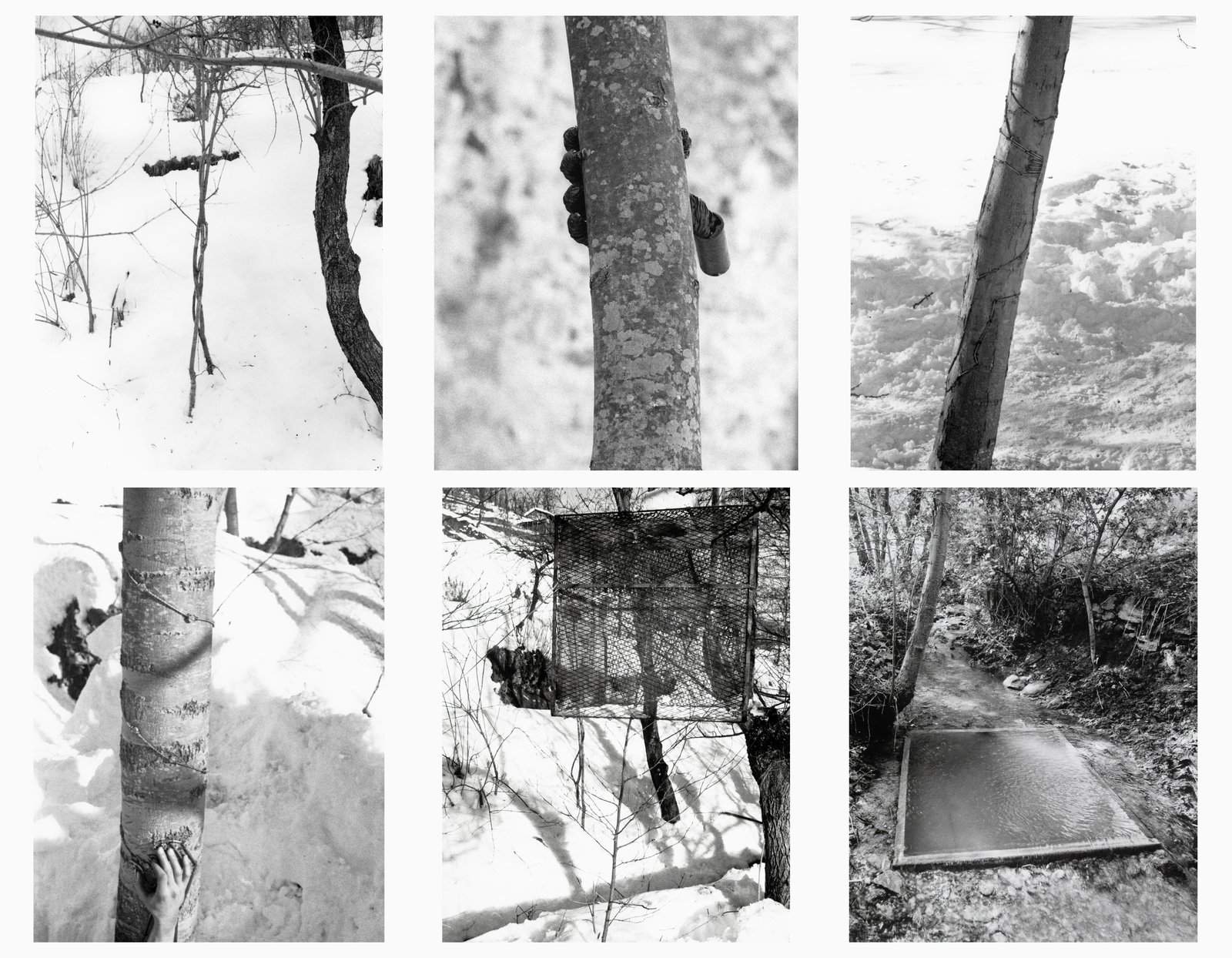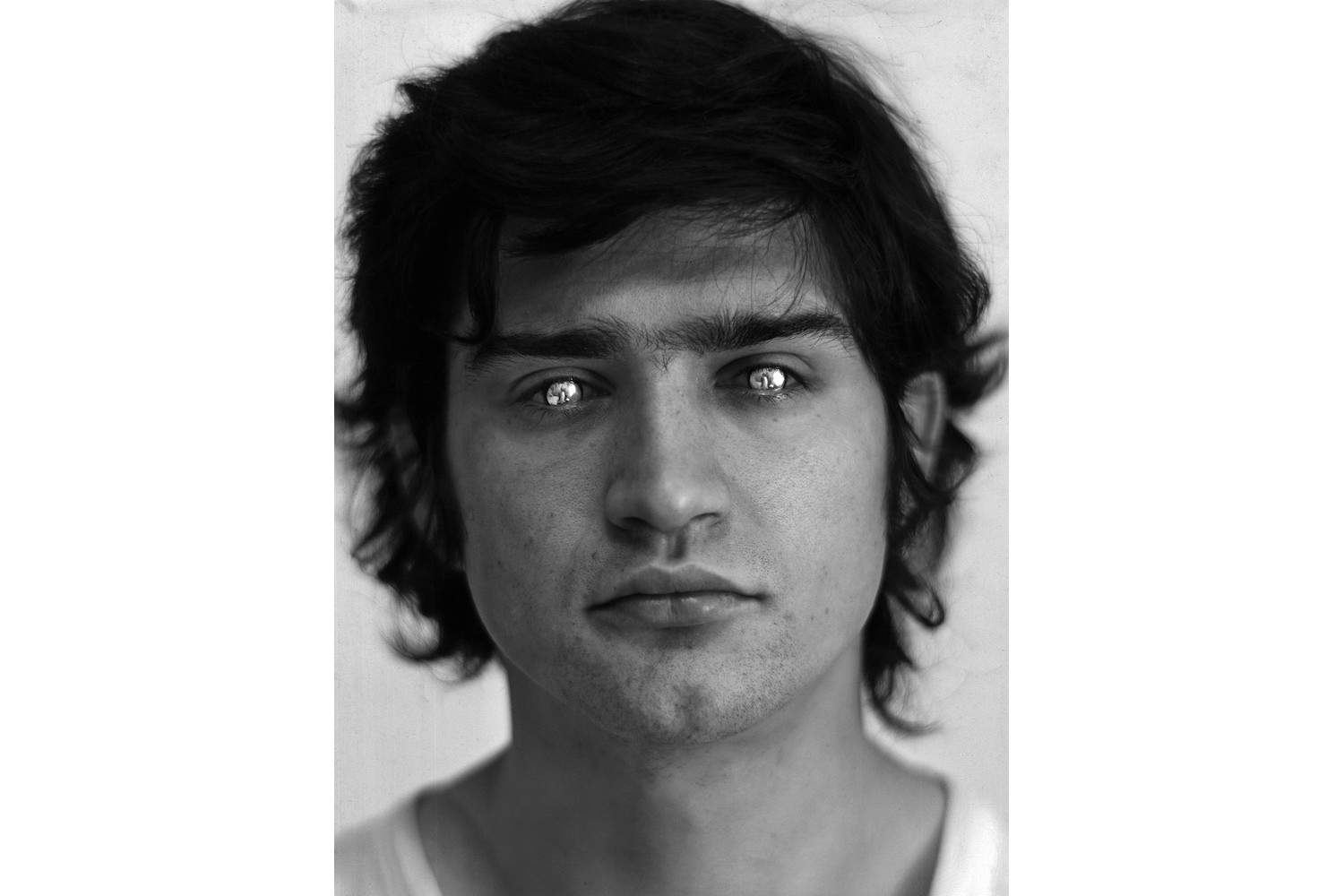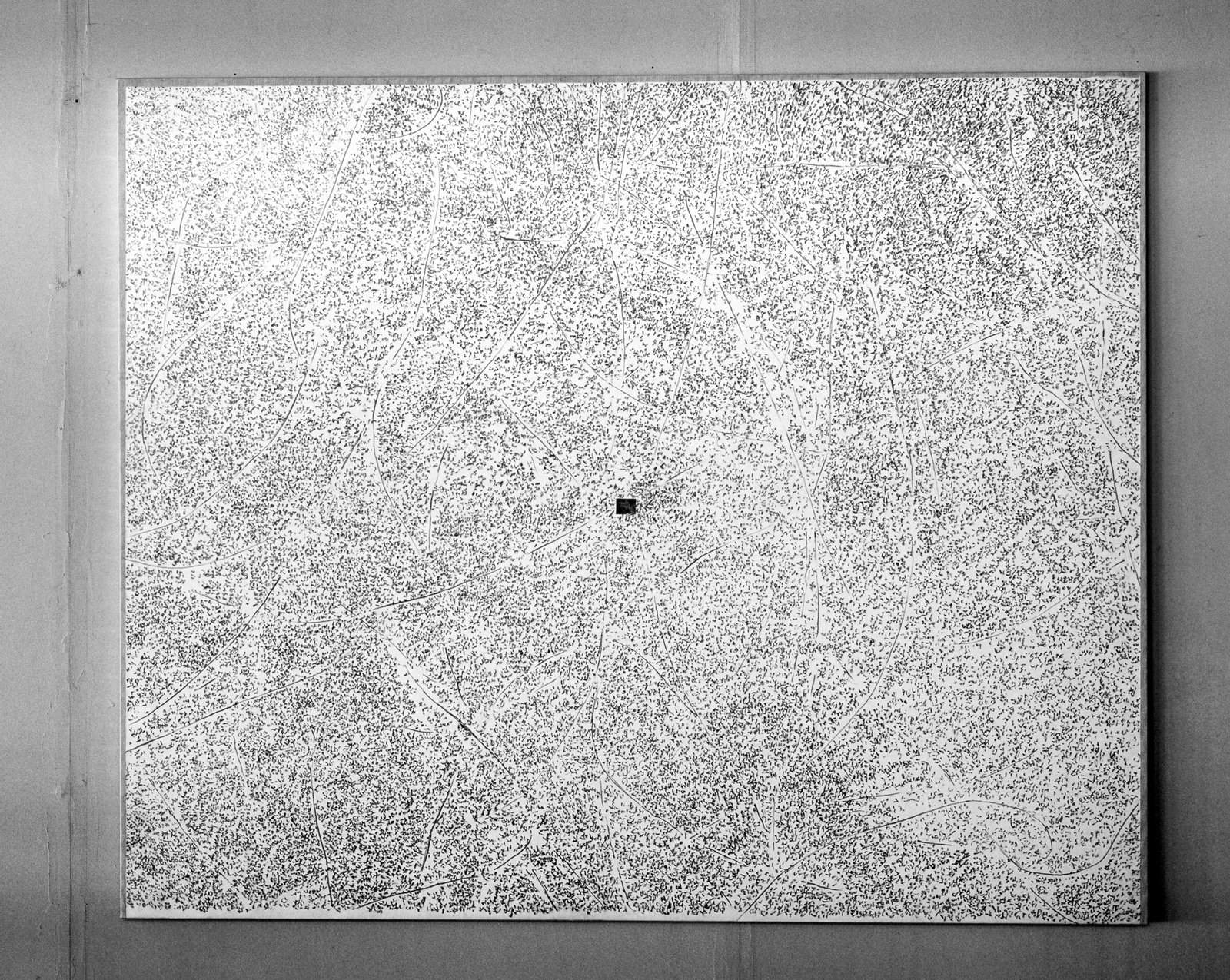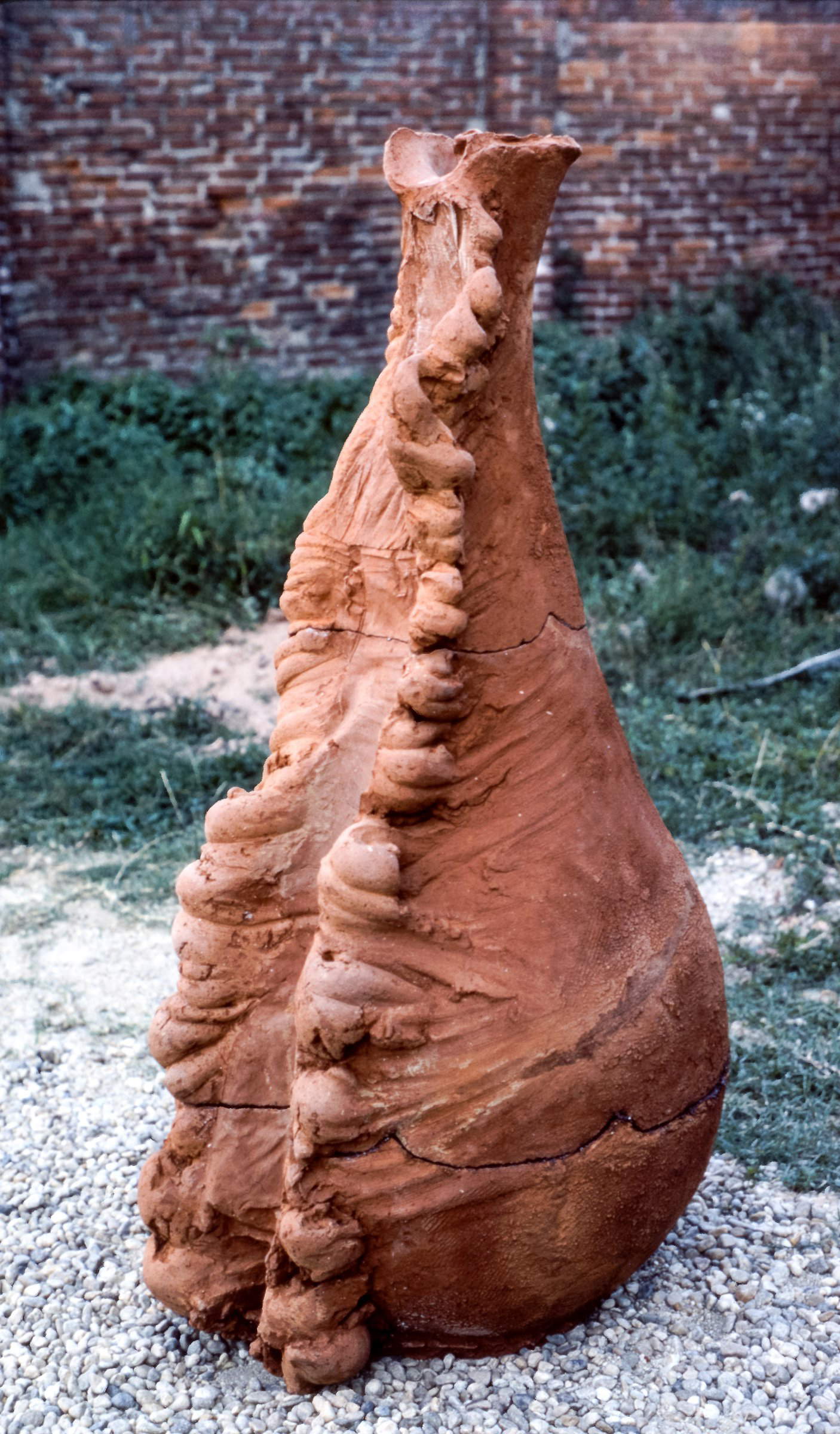Giuseppe Penone (Garessio, 1947), painter, sculptor, photographer, is one of the main exponents of theArte Povera movement. Adhering to Arte Povera from the very beginning, Penone has always used, for his sculptures, materials that were not usually used for this technique, such as wood, lead, copper and more.
The main focus on which Penone centers all his research is the relationship that exists between man, artificial elements and nature (read an in-depth study on the subject here). Penone is convinced that elements seemingly unrelated to each other are actually deeply interconnected, and he demonstrates this through a series of interventions of altering artificial materials to bring them back to the connection with nature, and for example by highlighting the veins of some skins as equal to those of leaves or by letting metals oxidize.A constant element throughout his production turns out to be the ’tree, which he proposes in different applications, frequently in the form of large bronze installations that reproduce the shape of the tree itself.

Giuseppe Penone was born on April 3, 1947, in Garessio, a town near Cuneo, Piedmont, and moved in his youth to Turin to attend theAccademia Albertina di Belle Arti. There he would meet the artists Giovanni Anselmo and Michelangelo Pistoletto, and together they would become part of theArte Povera movement in 1967. His first public exhibition appearance was in 1968, when he exhibited at the Deposito d’Arte Presente some works made with materials intended for other uses, such as lead, copper, wax, pitch, and wood, in full coherence with the dictates of Arte Povera.
Over the years he would gain important international acclaim and was sent to participate in the most important avant-garde exhibitions, including Documenta in Kassel and the Venice Biennale; he also made outdoor installations for renowned museums around the world such as the Kunstmuseum in Lucerne, Switzerland, in 1977, or MoMA - Museum of Modern Art in New York in 1981 and finally the Musée d’art moderne de la Ville de Paris in 1984. Finally, in 2007 he represented Italy at the Fifty-second International Art Exhibition in Venice.
His international successes culminate in several awards he has received, such as the Rolf Schock prize for visual arts awarded to him by the Royal Swedish Academy of Arts in 2001. In addition, in 2014 he was awarded the Praemium Imperiale for sculpture, considered the “Nobel Prize of art,” in a ceremony held in the city of Tokyo in the presence of Japan’s Prince Hitachi, honorary patron of the Japan Art Association. It is also recalled that in 1989 he was a finalist for the prestigious Turner Prize, a British award for contemporary art artists under the age of 50. For several years, Penone was a lecturer in Paris at the École nationale supérieure des beaux-arts, holding the post until 2012. Now sixty years after the beginning of his artistic career, Penone continues to work and live in Turin, spending much of his time in the Piedmont mountains where he still draws inspiration for his nature-based works.





Penone has made mainly installations and sculptures, focusing mainly on the relationship existing between man, artificial elements and nature, which is constantly evolving and becoming. This is a theme that has often been investigated in art and which Penone contextualizes in the context of the post-industrial world, highlighting its contradictions. Penone especially investigates the importance of the senses as a means for man to empirically know the laws that govern the natural world. Adhering to the Arte Povera movement, Penone develops works and sculptures using “poor” materials such as wax, lead, copper, wood, and many others, seemingly contradicting each other but revealing how they are actually interconnected (e.g., metals oxidize becoming green in color, as will be explored later).
In 1968 Penone first approached the element of the tree, which would be a constant in his production. The work Alpi Marittime consists of some manual interventions that were going to modify the development and growth of some trees in the forest of Garessio, thus giving rise to a performance that aimed to investigate the ways in which man interacts with nature and is able to alter it. 1970 saw a series of works that deal with the relationship between the human body and the surrounding environment, approaching body art, including Reversing One’s Eyes . In this work, Penone has himself photographed wearing two mirrored contact lenses. This expedient had two meanings: on the one hand, the landscape around him is reflected in his eyes and is at the same time introduced directly into his body; on the other hand, wearing these lenses actually led to an interruption of communication between artist and audience.
The following year, in 1971, he made Unfolding One’s Skin, in which he presented a vision of the human epidermis as a boundary between the inner self and the outer world, fostering dialogue between the two sides. From this same concept then derives the use of the technique of cast and frottage, which, for example, he uses in the work Pressure on paperof1974, in which he reflects on the imprint, automatic and unconscious, enhancing it through drawing. In 1978 he made a series entitled Soffi, in which he gives form to his breath by using materials such as leaves, terracotta, and branches, thus wanting to make evident the breath as lifeblood, and additionally presents the concept of contact as a generator of memory. Still relating to the relationship between the body and surrounding nature, he investigates between the 1980s and 1990s the concept of the fingernail as a further means of connection between the two realities. The reasoning leads him to the creation of large glass sculptures precisely in the shape of a fingernail.
Dating from 2000, on the other hand, is the installation Respirer l’ombre, which consisted of iron cages covered with laurel leaves and placed in a room, where a lung made of bronze is placed on one of the walls. Penone had made a “living” work, as the leaves over time dry up and die. However, Penone never abandons the theme of the tree, to which he returns on several occasions. In fact, the tree will be the protagonist of several series of sculptures and installations designed to be set up in public spaces: from the 1980s until recent years he creates large bronze trees such as the Well of Münster, completed in 1987 for the first edition of “Skulpture Projects”; Beech of Otterlo in the park of the Kröller-Müller Museum (1988); theVowel Tree inaugurated in 2000 at the Tuileries in Paris, Elevation in Rotterdam (2000-01).
In the heart of Rome there is also since 2015 a ’permanent installation desired by the fashion house Fendi and asked of Penone in an act of patronage aimed at redeveloping largo Goldoni. These are Leaves of Stone, two imposing bronze trees 9 and 18 meters tall supporting between their branches a block of marble weighing more than 11 tons, placed right in front of the Fendi fashion house. He also tried his hand at a series with the simple title Alberi (Trees), in which he works a wooden beam until it recreates the shape of the tree from which it derives; finally, in the early 2000s he made the series Idee di pietra (Ideas of Stone), which are large bronze trees, anchored to the ground, bearing large boulders among their branches. In 2002 he made Pelle di cedro (Cedar Skin), a work in which he imprints the imprint of a bark on an animal skin, to highlight how there is for all intents and purposes a harmony that governs the universe and that there are similarities between the ribbing of natural elements and animal skins.Between 2003 and 2007, he gave birth to the Garden of Fluid Sculptures, that is, he placed 14 works made of various materials in the park of the Reggia di Venaria, united by similarities that link them together, hence the fluidity of the title. Over the years Penone added more statues until the latest, 2019’s Anaphora.
Also from 2007 is Sculture di linfa, which occupies an entire room at MAXXI - Museo Nazionale delle Arti del XXI secolo in Rome. There are three different works in the room: the walls are covered with Corteccia di cuoio, or tanned leather made to adhere to the bark of trees to replicate their grain, while the floor is made of slabs of Carrara marble carved so that in the center there is a relief that replicates the imprint of the human brain, and it is Pelle di marmo-cervello . Finally, also at the level of the marble floor is Sap Sculpture, consisting of two wooden beams arranged horizontally and carved in such a way as to recapture in negative the original form of the trunk of the young tree, inside which is resin. The three works together result in a multisensory experience for the viewer, who is involved with sight, smell and touch.
The most recent works also include 2015’s Matrix , a 30-meter-long fir trunk that the artist excavates inside and into which he inserts a reproduction of part of the trunk of the tree itself made of bronze. The choice of bronze is not accidental; in fact, this metal is to all intents and purposes living matter, as it oxidizes and turns green over time, further reinforcing the link between man-made materials and nature. Finally, among Penone’s most recent works is Abete, a 22-meter-high steel sculpture on which 18 bronze tubes are inserted and which reproduces a bare tree. The sculpture was installed in Florence’s Piazza della Signoria on the occasion of the “Dantedì” exhibition dedicated to Dante Alighieri.






Many works have been donated by the artist himself to some major Italian contemporary art museums. For example, a group of more than 200 works is in the Castello di Rivoli, including Respirer l’ombre (1999); while Sculture di linfa (2007) is part of the permanent collection of MAXXI - Museo nazionale delle arti del XXI secolo in Rome.
In the town of Carnia, near Udine, it is possible to see some of Penone’s works together with those of other artists from the Arte Povera collective inside the “Art Park,” a park entirely dedicated to works of contemporary art wanted by publisher and contemporary art collector Egidio Marzona. Also, as previously mentioned, in Rome at Largo Goldoni, there is the installation Foglie di Pietra (2015).
Even abroad it is possible to see some of Penone’s works in permanent collections, such as Foglie di luce from 2016, which is inside the Louvre in Abu Dhabi. Some works have been housed in temporary exhibitions of major international museums, such as MoMA - Museum of Modern Art in New York in 1981 and 1894; The Centre Pompidou in Paris (where the aforementioned Respirer l’ombre in 2001 and Pelle di cedro in 2005, as part of an anthological exhibition dedicated to him, was presented). Finally, a sculpture from the Nail series is installed in Tokyo in the I-Land building complex, and others from the same series have been exhibited in the Musée Rodin in Paris, placed in contact with different materials.
 |
| Giuseppe Penone, Arte Povera and Nature. Life, works, style |
Warning: the translation into English of the original Italian article was created using automatic tools. We undertake to review all articles, but we do not guarantee the total absence of inaccuracies in the translation due to the program. You can find the original by clicking on the ITA button. If you find any mistake,please contact us.